Non-pharmacological and Lifestyle Approaches to Attention-Deficit/Hyperactivity Disorder: 8. Massage and Manipulation
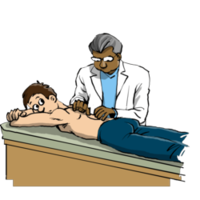
There is a small but persuasive literature on the value of massage and manipulation in people with attention-deficit hyperactivity disorder (ADHD).
Massage
The first study involved 28 adolescents with ADHD who were given either massage therapy or relaxation therapy for 10 consecutive school days. The massage therapy group, but not the relaxation therapy group, rated themselves as happier and observers rated them as fidgeting less following the sessions. After the 2-week period, their teachers reported more time on task and assigned them lower hyperactivity scores based on classroom behavior.
The second study was a randomized controlled trial involving 30 students aged 7-18 years. The results indicated that therapeutic massage given for 20 minutes twice a week produced significant improvements in both classroom behavior and mood.
There are a large number of studies that have shown that massage therapy can be helpful in managing anxiety in many different situations (1. 2.)
And it may also have some beneficial effects on the immune system.
Manipulation
There has been a great deal of interest in the notion that chiropractic manipulation may have an impact on the symptoms of ADHD.
A small study of seven children diagnosed with ADHD showed some improvements in ratings of hyperactivity.
There are some interesting case reports:
In the first a young girl who had been diagnosed with ADHD whose symptoms had failed to respond to an astonishing array of medications, but who improved once a cervical kyphosis was treated.
The second concerned a nine-year-old with Tourette’s and ADHD who showed a remarkable improvement after a course of chiropractic treatment.
The third concerned an 8-year-old with multiple learning and behavioral disorders associated with ADHD that improved after a course of chiropractic treatment. This case was rather different form the others in that the symptoms began after a fall, and it seems likely that the problems were at least in part due to pain and discomfort, and the child’s improvement may have been related to an improvement in both. The case highlights the importance of remembering that problems with mood, sleep and attention may be secondary to other medical or psychological maladies.
A recent review article on chiropractic care in people with learning disabilities and dyslexia does touch on ADHD and rightly concludes that the evidence so far is interesting but far from conclusive.
There is clearly a great deal of scope for further research into massage and manipulative therapies and ADHD.
I shall keep you posted if any more studies come out.
I am indebted to Dennis da Ponte from Life University in Atlanta for helping track down some of the papers that I referred to in this article.
Non-pharmacological and Lifestyle Approaches to Attention-Deficit/Hyperactivity Disorder: 7. Yoga, Meditation and T’ai Chi Ch’uan

It may seem strange that someone with an attentional problem could sit still long enough to do yoga or meditation, but here is some evidence that they can do them and derive long term benefit.
Yoga
There are hundreds of different types of yoga, but the one that has been examined the most is hatha yoga. The first report of an improvement in ADHD symptoms with relaxation training including a yoga component was published in 1992. There is a small peer-reviewed study of yoga for children with ADHD. It was a six-week open trial of twice weekly hatha yoga lesson for both parents and children. The participants were also encouraged to practice at home. At the end of the six weeks, there were subjective improvements in behavior, and in those who practiced at home there was an improvement in emotional lability.
Another pilot study this time from Heidelberg in Germany suggested that yoga can be an effective complementary or concomitant treatment for ADHD. That was also the conclusion from a recent review article: yoga, like most of the other complementary methods of treatment, may be a good adjunct, but we do not have enough evidence to use it in place of existing treatments.
That being said, many experts and many yoga teachers consistently report that they have students who have improved very markedly when they follow a regular yoga regimen.
Meditation
Eugene Arnold’s excellent review of unorthodox treatments for ADHD cites two studies from the 1980s that showed significant improvements in the behavior of children who were taught to practice meditation. (Kratter J. The use of meditation in the treatment of attention deficit disorder with hyperactivity. Dissertation Abstracts International 1983;44:1965 and Moretti-Altuna G. The effects of meditation versus medication in the treatment of attention deficit disorder with hyperactivity. Dissertation Abstracts International 1987;47:4658.) Neither of the reports is easily available and the studies were not published in peer-reviews journals. A small six-week pilot study using Sahaja Yoga meditation for children with ADHD and their families reported a small but useful benefit.
Although there is not much published research on the use of meditation and ADHD, there are a great many anecdotal reports, and some good theoretical reasons for thinking that it should help. Research has shown that expert meditators produce both structural and functional changes in their brains, particularly in the regions involved in attention.
T’ai Chi Ch’uan
There are a large number of reports of people with ADHD improving if they practice t’ai chi or qigong, and in the days that I taught them, I have seen some remarkable improvements. But sadly there are few peer-reviewed studies in any of the languages that I can read.
There is a small but interesting study that was published in the Journal of Bodywork & Movement Therapies and involved 13 adolescents with an average age of 14.5 years. They were taught some basic t’ai chi moves for 30 minutes twice a week for five weeks. The sessions consisted of breathing exercises accompanied by slow raising and lowering of the arms, twisting and turning of the arms and legs, shifting body weight, rotating and changing direction.
The researchers used the 28-item Connors’ Teacher Rating Scale was used to evaluate their behavior prior to the tai chi classes, during the classes and two weeks after the classes ended. The adolescents’ teachers perceived them as less anxious, emotional and hyperactive. These improved scores remained consistent throughout the two-week follow-up period.
Given the anecdotal reports of the benefit of t’ai chi ch’uan and qigong on attention, concentration, depression and anxiety, it is important to do some more research on them n ADHD. In the meantime, there is no known downside of someone with ADHD using these practices in combination with more orthodox approaches.
And if they help, I would like to hear about it!
More Data on Guanfacine for Attention Deficit Disorder

Several months ago I mentioned that there is growing interest in a medicine called guanfacine for attention-deficit /hyperactivity disorder (ADHD).
Though it is not yet approved for this indication by the Food and Drug Administration, there were a number of papers about it at the Annual Meeting of the American Psychiatric Association in San Diego last month.
The first (NR656) from Cincinnati and Massachusetts General Hospital looked at guanfacine extended release for the treatment of children aged 6 to 17 with ADHD. The study showed that the medicine wa both effective and well tolerated.
The second (NR657), also from Cincinnati looked at children who had been treated for 23 months, and it looks as if the efficacy is maintained. Thirteen out of 259 patients had serious side effects, which is actually quite a low number.
There were two more from Massachusetts General Hospital (NR658 and NR659) that produce very similar results: good efficacy and tolerability for up to two years.
Now we shall have to wait and see what the regulatory authorities in Europe and the United Sates have to say. There has been so much concern about the safety of medicines that the FDA in particular is being etxra cautious these days.
I shall let you know if and when I hear something more about guanfacine.
Yet More Evidence that Attention-Deficit/Hyperactivity Disorder is not Just in the Head.
There is more and more evidence that many if not most illnesses affect the entire body. This has always been one of the tenets of Integrated Medicine: that a problem in a particular organ reflects an imbalance in the whole body. And by body we do not only mean the physical frame, but also the person’s subtle systems and relationships from their individual cells to their Higher Self: from cell to soul.
There was yet more evidence for this from research (NR78) presented on Monday at the 2007 Annual Meeting of the American Psychiatric Association in San Diego, California. Investigators from Gaziantep University Sahinbey Research Hospital in Turkey looked at twenty adults with ADHD and measured the levels of the oxidant, nitric oxide, and superoxide dismutase, one of the key anti-oxidant enzymes, in their blood.
They had remarkably high levels of nitric oxide and low levels of the enzyme superoxide dismutase, suggesting an oxidative imbalance in ADHD.
If confirmed, this would be an intriguing result that could open up all kinds of possibilities for our understanding of ADHD, its diagnosis and treatment. But first it has to be checked by other researchers. Measuring nitric oxide and superoxide dismutase levels are notoriously difficult, and the number of people in the trial was small. But this is one of those pieces of research that makes your antennae go up.
I shall send out some messages to see if anyone else is working on the problem.
Vyvanse
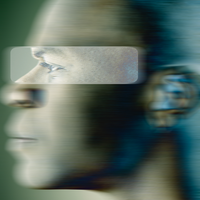
There is no doubt that we need more options for the treatment of attention-deficit/hyperactivity disorder (ADHD), and though it would be nice to be able to treat everyone with a diet or some other approach, for many it is just not feasible.
Of the current medicines, most do not last quite long enough, and occasionally may need to be taken more than once a day. The trouble is that taking these medicines intermittently, or only having it in the circulation for a short time, plays havoc with the dopamine receptors in the brain.
One of the big problems with the current group of stimulant medicines is that they are amphetamines, and have enormous abuse potential. They are sold and re-sold and taken by mouth, inhaled, smoked and injected. In some parts of the United States abuse of ADHD medicines is the number one form of substance abuse.
So it would be a huge advantage to have long-lasting medicines with a much-reduced risk of abuse.
Vyvanse is an extremely interesting new treatment for ADHD that has just been approved by the FDA and should be available in the United States in the very near future. It is manufactured by Shire Pharmaceuticals that is getting a reputation as the company with the biggest interest in ADHD.
During development, Vyvanse was known as NRP104. Its main ingredient is lisdexamfetamine dimesylate. Vyvanse is unique in another way too: it is a prodrug or ‘conditionally bioreversible derivative’ of amphetamine, the main ingredient in Adderall and Adderall XR. This is a key point: unlike other stimulants it is conjugated to an amino acid, and has to go through the stomach and be digested before it can become active. Therefore there is a much reduced risk that it will be abused, since it cannot be snorted or injected like other ADHD medicines.
There was a great deal of new data presented at the In research presented this week at the 2007 Annual Meeting of the American Psychiatric Association in San Diego, California. The bottom line seems to be that the medicine is both effect and well tolerated. It is going to be a genuinely useful addition to the treatments that we can offer people with ADHD.
Non-pharmacological and Lifestyle Approaches to Attention-Deficit/Hyperactivity Disorder: 6. Biofeedback
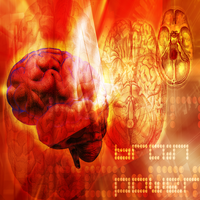
It seems odd that hyperkinetic children and adults with attentional problems should be able to stop long enough to try yoga, meditation of biofeedback. Yet there is good evidence that they can and they do, and that all three modalities can be helpful.
Today we are going to look at the use of a specific form of biofeedback.
Neurofeedback is a form of behavioral training that is aimed at developing skills to help people self-regulate the activity of their brains.

The first attempts to use biofeedback in children with behavioral problems took place in the early 1980s, following some interesting work on using it to control epilepsy, headaches and an array of other problems. Several good quality neurofeedback studies have been published over the last ten years.
In neurofeedback training, people are taught to control specific aspects of electrical brain activity. They are hooked up to machine that records electric impulses from the brain – a form of electroencephalograph (EEG) and they are given immediate feedback and positive reinforcement, usually using a visual display.
In frequency training, people are asked to increase or decrease the activity of different EEG frequency bands. To learn to regulate their level of cortical excitability they are trained to generate and regulate slow cortical potentials (SCPs). Slow cortical potentials are slow event-related direct-current shifts of the EEG.
With a little practice, almost anyone can learn the basic techniques, and as they do, they constantly improve their ability to regulate their attention, thoughts, moods and reactions. Many young people with attention-deficit hyperactivity disorder (ADHD) look at it like a game, and quickly become engaged with it.
Studies of neurofeedback have shown some specific effects on attention and memory processes. The key point is that the improvements in performance are maintained once the person is engaged in real-life activities. The techniques can be used to help healthy people perform better as well as helping people with problems.
Several studies have shown that children with ADHD had improvements in behavioral and cognitive variables after both frequency (e.g., theta/beta) training and SCP training. Some of the improvements have been sustained for six months. It has also been possible to show improvements in some neurophysiological measurements. Most studies have been done in children with ADHD, and in most other things were done as well. For instance the children were kept on medications, or children were given other types of exercises to reinforce what they were learning.
There has been some good brain imaging research that has shown that neurofeedback in children with ADHD normalizes the functioning of the anterior cingulate cortex, the key neural substrate of selective attention
There is also another type of feedback training. There is evidence that the level of activity in a classroom containing hyperactive boys can be reduced using feedback about the level of activity together with positive reinforcement. Some recent research has produced preliminary data in which investigators used a device that combines a beeper and actigraphy technology for measuring, monitoring, and modifying motor excess in children. The feedback reduced the activity level of seven out of nine hyperactive boys.
There remain a lot of unanswered questions about biofeedback in the treatment of ADHD. In an excellent review article, John Gruzelier and Tobias Egner from London pointed out that neurofeedback had grown and been widely adopted with little in the way of research to back it up. However their own work has shown that the technique can help improve cognition, and they provided the first evidence of conscious control over the ratio of alpha and theta waves in the brain. They also showed that the technique could lead to remarkable improvements in artistic aspects of music performance, which were equivalent to two class grades in conservatory students.
The evidence for biofeedback is growing, and since it is non-invasive ad may be associated with a number of other improvements in mood and cognition, it will likely bean important option for some people with ADHD.
Non-pharmacological and Lifestyle Approaches to Attention-Deficit/Hyperactivity Disorder: 5. Exercise, Environment and Sleep
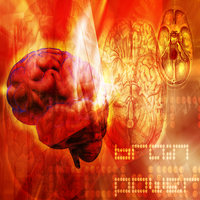
One of the most valuable things to do to help children or adults with ADHD is to help them to structure their time.
All the approaches that we have already discussed, from medications to diets, herbs and homeopathy are all tools designed to help people get to the point where they can create, accept and maintain more structure in their lives. Exercise, the environment and regular sleep are all essential contributors.
Exercise
Aerobic exercise may be particularly helpful for people who also have a mood disorder or anxiety probably by reducing inflammatory mediators in the blood.
There is a movement therapy called eurythmy that was developed by Rudolf Steiner. It is quite popular in central Europe, and there has been a report that it could help children with ADHD.
Environment
There is evidence that children with ADHD do better if they are outside, and even being a green room seems to help them.
There are plenty of anecdotes about children and some adults with ADHD improving if they have classical or New Age music in the background. Paradoxically some like and claim benefit from “heavy metal.” There is recent evidence from New Zealand indicating that music therapy may contribute to the reduction of a range of ADHD symptoms in adolescents, as it does in younger children. With the advent of the iPod, it is easy to make a playlist of music that helps attention and concentration.
The data on the effect of watching television, computer time or playing video games is a mixed bag. There are people who say that children under the age of three should not watch television at all, and the American Academy of Pediatrics recommends that children under the age of 2 years should watch no television, and that television time should be limited to less than 2 hours daily in older children. The research data has not produced a clear answer one way or the other. Some of the most recent research does suggest a link between the amount of time that children spend
watching television and attention-deficit/hyperactivity disorder, but
it remains unclear as to whether elevated levels of television viewing
are the cause or result of ADHD symptoms. Other researchers have failed to find a connection. The best thing is to play safe and to keep television viewing to a minimum: there are so many other things for a child to be doing.
There have been questions about whether other environmental factors, particularly lead, mold and Candida could cause ADHD.
Lead toxicity is well-known to cause neurological problems, but studies of a link between lead levels and ADHD have usually failed to find a link, and in a study in which children with minimally elevated lead levels were given a drug – penicillamine – to remove lead, there was no change in ADHD rating scores. So it is unlikely that lead is a factor in most children.
Because of the high rates of allergies in people with ADHD, there have been attempts to see if mold or other environmental pollutants could be causing ADHD. So far the data has drawn a blank.
Another environmental factor that has been look at is the yeast Candida albicans. It can produce nasty infections in people with compromised immune systems. But in addition, some people have claimed that Candida infections can cause an array of medical problems, including ADHD-like symptoms. People who are thought to have Candida have been treated with diets as well as the antifungal agent nystatin, with mixed results. It would be good to do a formal study of Candida in ADHD and see if there is a link and if treatment helps. So far we just do not have one.
Sleep
Sleep disturbances are extremely common in ADHD. They often get better once an individual is treated, but it is still a good idea to practice good sleep hygiene.
- Stress management
- Exercise a couple of hours before retiring
- Keeping mentally stimulated until it is time for bed
- Though we want to have a regular bedtime and bedtime ritual, to begin with don’t go to bed until you are tired
- No caffeine, alcohol or nicotine after 6pm. (Preferably, of course, no nicotine ever!!) {Remember that many over the counter painkillers contain caffeine, as does chocolate}
- Try to keep the bedroom atmosphere relaxing, and establish a sleep ritual
- Keep the room quiet and dark
- If you like aromatherapy, lavender and chamomile are usually best
- If you cannot sleep, get up and do something relaxing: struggling to go to sleep is virtually impossible.
- Do not have a television in the bedroom. Bedrooms should be reserved only for sleep in children and for one other activity in adults
- Always get up at the same time in the morning, to try and re-set your brain, and as soon as you get up, be exposed to as much bright light as possible
Non-pharmacological and Lifestyle Approaches to Attention-Deficit/Hyperactivity Disorder: 4. Homeopathic Remedies

A fundamental principle of homeopathy is that that all symptoms of ill health are expressions of disharmony within the whole person and that it is the patient who needs treatment not the disease.
The roots of homeopathy are ancient, but the “modern” form was created in 1796 when a German doctor named Samuel Hahnemann, formulated an approach to the cure of the sick that he called homeopathy (from the Greek words meaning ‘similar suffering’). Two thousand years earlier the Greek physician Hippocrates proposed that there were two ways of treating ill health:
- The way of “opposites” – as an example, a medicine is an anti-hypertensive, aimed at opposing high blood pressure and
- The second was the way of “similars, of “like curing like.”
A good example of the second approach is insomnia. The conventional treatment might be to use a medicine to bring on sleep artificially. It may well help someone, but the pharmacological industry recognizes that many of the older medicines could produce poor quality sleep, or be addictive, so they continue to create new medicine. Medicines are getting ever better, but the basic principle remains that they are intended to induce sleep artificially. The homeopathic method of “similars” is to give the patient a minute dose of a substance, such as coffee, that would in large doses cause insomnia in a healthy person. This approach may induce natural sleep. The minute dose is really minute: it is so dilute that there are no molecules left. It is believed that homeopathic remedies work by stimulating the body’s own healing power. The remedy is a stimulus that will assist the systems of the body to clear themselves of imbalances.
Homeopathic treatment is highly individualized. Rather than saying that someone “Has ADHD,” the treatment looks at all the signs and symptoms, likes and dislikes that a person brings to the table.
The principles of homeopathy cut across everything that science believes, and so it attracts a lot of criticism. Words like “voodoo” and “witchcraft” are some of the more polite terms that have been applied to it. Yet tens of thousands of people claim that it works and in some parts of the third world it is used first line, even in people with serious illnesses. The research base is thin, but it does exist. There are also a sizeable number of attempts by credible scientists to explain the strange phenomena of homeopathy using rigorous scientific models.
There have been several studies of homeopathy in ADHD, or variable quality, but interestingly four have been positive ( 1, 2, 3, 4) and one failed to find an effect. Overall, the scientific evidence for homeopathy in ADHD is weak, but it is important to be aware of the concept of “levels of evidence.”
In the past it was often thought that the only kind of evidence to be of any value in clinical decision making had to have been obtained by randomized controlled trials. Yet we all know from experience that there are other types of evidence. A teacher or a colleague may have recommended a course of action based on experience or observation, and this can provide valuable guidance. We now recognize four types of clinical evidence:
- Case reports
- Case series and uncontrolled observational studies
- Retrospective database analyses: could be used to test hypotheses but are sometimes limited to hypothesis-generation
- Controlled analytic studies, including randomized clinical trials
The first two are used primarily for generating hypotheses. Database analyses are either used for generating or testing an hypothesis, while the controlled studies are all designed to test hypotheses. When we review evidence or perform meta-analyses we give each type of evidence a rating.
So controlled studies are given a higher rating than case reports, because the evidence can be generalized to many individual patients. A further refinement is to factor in the source of the study. So a study by a pharmaceutical company tends to get a lower rating than an independent study.
There is another important issue about clinical trials, which is that we must not confuse pragmatic trials (does the treatment work?) and explanatory studies (how does is work?). Trials are usually designed to answer only one of those two questions. Clinicians have sometimes fallen into the trap of saying that they do not believe a pragmatic trial because it did not explain the mechanism, without realizing that these are two separate questions. Aspirin was used for two centuries before we learned its mechanism of action.
Although homeopathic treatments are all individualized, and finding the best one may require an expert, here are some of the homeopathic remedies most commonly used in the treatment of people with ADHD:
Aconite: They will often have had a major shock in their lives; they tend to have strange and irrational fears, for example cotton balls, and they have a tendency to sweat at night and to have a tendency to get fevers and to be constantly thirsty
Argentum Nitricum: These people – and children – tend to be thin and excitable. They are always in a hurry, moving around and touching everyone. They often have obsessive-compulsive behavior. They are afraid of crowds and dislike going to public places, including school. They prefer being outdoors. They are hyperactive but with a quality of innocence. Though they may have short bursts of anger, they are rarely malicious. They are prone to hypoglycemia and they are better after they have eaten. They tend to craves sweets, though sadly those candies often adversely affect her or his behavior. They may be susceptible to conjunctivitis and tonsillitis
Belladonna: They are forgetful, slow, poor learning ability. They tend to be very sensitive to noise and light. They have night terrors and a fear of ghosts. When they are angry they sometimes look “wild.” They tend to have large heads with bright red cheeks. They look well, even when sick. In addition to the ADHD, they have a tendency to develop otitis media and they typically complain of hot and throbbing discomfort. They often crave cold drinks, lemons and oranges
Cannabis indica: The child or adult feels isolated, disconnected with feelings of anguish, terror, ecstasy. They feel spacy, confused and inattentive. Time and space feel disoriented. They have a fear of going insane: everything feels like a dream, even familiar things seem strange or unreal. He or she acts as if they are in a dream or off in space. They cannot pay attention for long. They tend to be good at science projects but can theorize until they lose touch with reality. They are absent-minded, can be obsessive-compulsive and sometimes look as if they are on drugs
Chamomilla: They tend to have a bad temper: very irritable and impatient; complaining, frustrated, restless, and thirsty. They are also contrary – they do not know what they want; demands one thing than want something else. A fidgety child quiets down once he or she has attracted attention. A child wants to be carried everywhere or he or she will whine and scream but will settle down if carried and rocked. They have an aversion to being touched with a hypersensitivity to pain: feels pain is unbearable; everything is intolerable. They can become so hyperactive that they will get exhausted and begin to cry. There is a dullness of the senses with a diminished power of comprehension, as if they were hard of hearing. All of these symptoms are worse at night
Cina: They are often cross, contrary and disobedient with very difficult behavior. If it is a child, he or she does not want to be touched or even looked at and turns away when approached. Nothing satisfies them for long: they are restless, fidgety and fretful, especially during sleep when they grind their teeth and may wet the bed. They often have trouble with parasites, such as pinworms. Their sleep is very restless, accompanied by jerking, frequent swallowing and coughing; often sleep on their abdomen or the hands and knees during sleep. They tend to have an irritated nose causing a constant desire to rub, pick, or bore into it until it bleeds. Their ears can be itchy and they often have twitching of face muscles and eyelids. Some of them may even have seizures. Their appetite can be ravenous with a lot of thirst, and a lot of craving of sweets; children often have large bellies
Hyoscyamus: Difficult children with poor impulse control, even though engage in premeditated actions. They talk excessively and may have episodes of rage that might include hitting and screaming. They can be manipulative, lying, and violent. They seem unable to think, are unresponsive to questions or cannot bear anyone talking to them. They are intense, fearful and excitable. They often have feelings of abandonment, jealousy and suspicion. They have fears of the dark, of dogs and of water. They tend to be very animated, seeming to be silly and foolish, smiling and laughing at everything, often inappropriately and do things outrageous things to the center of attention, being the clown or dancing like a monkey. Children love to run around naked and try to embarrass their parents. They can be jealous of their siblings, often may injure them. Interestingly they cannot tolerate being covered up.
Lachesis: They tend to be loquacious, agitated and hyperactive. They are restless and moody with strong emotions. They can be very jealous of their siblings or even a same sex parent. Lachesis children, and sometimes the adults, tend to be vengeful, sarcastic and nasty, and to have a self-destructive side. They also have a marked lack of confidence and they can easily become depressed, withdrawn and hopeless. They hate any kind of physical or behavioral restriction, such as tight clothing or being “grounded.” They hate authority and may even run away from home. Some may also show aggression which surfaces easily and makes them difficult to live and work with. They tend to be very suspicious with a marked preoccupation about others. They often feel that others are often criticizing them and putting them down. All of these symptoms, including the attentional problems are worse when they wake up. Typically they are not refreshed when they wake, and complain of a feeling of suffocation.
Lycopodium Clavatum: These people tend to be insecure about themselves, but they overcompensate, acting like boastful bullies. They often have marked lack of confidence and many fears, and are often really cowards. They can be dictatorial at home where they feel safe. They have a real fear of looking bad and they are afraid of failure. They are usually intelligent and may look older than his or her years. Many of them have dyslexia and confuse words or letters. Performance anxiety is common and many prefer younger friends, while wanting to please authority figures. Lycopodium people tend to have a lot of abdominal gas. They are more tired, restless and irritable between 4 and 8 p.m. These children often do not want to sit down to have dinner, preferring to run around.
Stramonium: These children and adults have ADHD, but are also violent or fearful. The hyperactivity is usually severe, they are easily terrified and inclined to violent agitation and fits of rage. Their speech is loud, fast, and sometimes incoherent. They have feelings of terror and abandonment and have multiple fears: of the dark, dogs, evil, death and suffocation. They tend to be constantly thirsty but paradoxically they are afraid of water yet they dread water. As children they are especially afraid to be alone at night. They have nightmares and night terrors that are at their worst between midnight and 2 a.m. They often wake up screaming, saying that they can see ghosts, specters and spirits. The child can be sweet all day and have terrors at night;
Sulfur: These people can be egotistical, and they try to control his or her feelings with their intellects. They hate being scared and often feel as if they have been disgraced as if being scorned; delusions that he or she has been disgraced. They are often messy and untidy, but they do not see it. They can be lost in thought, absent-minded, spacey, forgetful and loses things. They are typically full of theories and dreams, they love fantasy and science fiction. They tend to be loners with limited social skills; preferring computers, reading, mechanical things
Tarentula Hispanica: Symptoms are accentuated by music. He or she acts wild and crazy and loves to sing and dance. He or she feels as if there is never enough time; feels as if he or she has been insulted. There is often a sense that there is a stranger in the room. He or she sees faces on closing his or her eyes. Children tend to be restless, hurried mischievous and sneaky. They tease, hide things from others and may cut things, including
themselves.
Tuberculinum: Revolts against restriction and have a powerful need to feel free. He or she always desires and seeks change, travel and new experiences. Always feels dissatisfied; feels as if there is never enough time. They are usually afraid of dogs and cats. He or she often has delusions that he or she can fly, that someone is following her or him. They are often compulsive, uncontrollable and destructive. They throw tantrums and break things. Many are precocious and they can be malicious
Veratrum album: These people often feel that something dreadful has happened, even if it has not. They are usually distressed or even inconsolable. Their minds race, they are agitated, restless, fidgeting and impulsive. They are always busy, but often the business is not goal directed. They often become overly religious and may feel that they have the ability to communicate directly with God. They sometimes become quite grandiose believing themselves to be a great and distinguished
Bear in mind that this is only a partial list, but it gives you a very good idea of just how specific the homeopathic remedies are. Two people may both have been diagnosed with ADHD, but the accompanying features determine which remedy will be best.
If the symptoms fit, then the treatment is to give the appropriate remedy. The skill is in doing the precise matching of symptoms and remedy and in deciding on the correct dosage to use.
Non-pharmacological and Lifestyle Approaches to Attention-Deficit/Hyperactivity Disorder: 3. Herbal Remedies
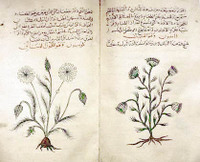
Herbal medicines are crude drugs of vegetable or plant origin, which are used for the prevention or the treatment of disease states or to attain or maintain a condition of improved health. The use of herbs can be divided into four main categories:
- Folk Herbalism: You may well have come into contact with this: we use the term folk herbalism to describe traditional healing methods based upon plants. Many of our ancestors brought folk remedies from Europe or learned of healing herbs from Native Americans
- Western Medical Herbalism: This has been developing in Europe over the last century, and represents an attempt to classify and codify medically useful herbs
- Ayurvedic Herbalism: This is the ancient traditional herbalism of the Indian Subcontinent. Some Ayurvedic herbs have found their way into conventional medicine. The best-known example is the drug reserpine, which was at one time used for treating high blood pressure and mania. It was extracted from the Himalayan bush Rauwolfia serpentina. Ayurvedic herbs are most readily available in cities with large Indian populations
- Chinese Herbalism: One of the five branches of traditional Chinese medicine, there are many thousands of Chinese herbs, which are usually administered in complex combinations. Though most are prepared with close attention to detail, there have been many reports in the literature of adulteration of Chinese herbs with heavy metals.
Herbs are used directly as teas or extracts, or they may be used in the production of drugs. Around 25% of the prescription drugs sold in the United States are plant based. Two good examples are aspirin, which was originally extracted from the bark of the willow tree and digoxin, a purified form of digitalis, from the foxglove. Many more herbal ingredients are present in over-the-counter medicines, particularly in laxatives.
Herbal medicines are considered to be dietary supplements; therefore they are not required to meet the standard for drugs specified in Federal Food, Drug, and Cosmetic Acts. They are only required to meet the standards set forth in the 1994 Dietary Supplement and Health Education Act (DSHEA). Furthermore, they may be produced without complying with standards for good manufacturing practice. They also do not need the prior approval of safety and efficacy by the Food and Drug Administration (FDA). So long as the term “disease” is not on the label, the FDA has no regulatory powers.
Many herbal products have been used to treat Attention-Deficit/Hyperactivity Disorder (ADHD), and there are hundreds of websites claiming that their products are effective. However the research is often not quite what it seems. Some sites simply use loads of testimonials, but happily there are others who have products supported by empirical research. The use of herbal remedies in ADHD is popular in Europe, although the problem is less widely recognized in that part of the world. The most popular include sedative herbs, herbs used to enhance brain function, antioxidants and stimulants. The last category is herbs that are used to treat other symptoms, particularly mood disorders that are very common in adults with ADHD.
Medical reviews of herbal remedies do not always make the point that herbalists typically individualize the treatment for the individual. So two people with apparently similar symptoms may receive different treatments.
They are often used together with a whole-foods diet, high in protein and complex carbohydrates and low in simple sugars.
Sedative herbs
Sedative or calming herbs are amongst the most popular herbal options for treating ADHD. These include:
Chamomile
Hops
Lemon balm
Valerian
Kava kava
Sedative herbs may be helpful in promoting sleep in children who have trouble falling asleep. They are generally safe, but there is little scientific evidence that they can improve daytime behavior in children with ADHD, and it is important to be aware that they are medicines that do have side effects and may interact with each other and with prescription medicines. Here is a chart of some interactions between medicinal herbs and drugs.
Brain “enhancing” herbs
A small open study of 36 children with ADHD who were treated with a combination herbal combination of Panax quinquefolium (200 mg) + Ginkgo biloba (50 mg) twice daily for 4 weeks, reported an improvement in 74% at the end of the study. The combination was marketed as AD-FX, but it has recently become difficult to obtain it in the United States for commercial rather than legal reason. Gingko has become one of the most popular herbs given to children with ADHD, but more research is necessary: there is enormous variability in the quality of commercially available herbs. Gingko may also cause bleeding in people at risk of it. It was interesting that Panax was included: there are reorts of people becoming more hyperactive in overdose.
Antioxidant herbs
Pycnogenol (pine bark extract) has been tested in a randomized, controlled trial involving 61 children who received either 1 mg/kg/day Pycnogenol or placebo for 4 weeks. In this study, Pycnogenol was associated with a significant reduction of hyperactivity, improved attention, eye-hand coordination, and concentration. When the herb was stopped, the symptoms returned within a month. An earlier short study in adults had failed to find an effect, but it could have been because of the dose used.
Stimulant herbs
Coffee, tea, and cocoa all have stimulant effects that tend to be milder than medications. Caffeine helped spatial learning deficits in an animal model of ADHD, and there have been several small studies of caffeine, but most have failed to find much benefit. In a double-blind cross-over trial of just 8 boys with ADHD modest doses of caffeine (160 mg, roughly equivalent to 1.5 cups of coffee) were less effective than large doses of methylphenidate (20 mg) in improving behavior. Although many adults self-medicate with coffee, few use it in children with ADHD. And it can, of course, cause insomnia and anxiety.
Chinese herbalists use multiple combinations and there have been some publications (1, 2, 3,) suggesting that further work on Chinese herbal medicines might be worthwhile. The methods of some Chinese medical research studies are rather different from those done in the West, so we need to be a little cautious.
There are some herbs and supplements that are linked to an increase in symptoms of hyperactivity including:
Yohimbine
Korean ginseng
Siberian ginseng
American ginseng
L-glutamine
Conclusions
Although there is some data, and a lot of practical experience, it is still not clear who is likely to benefit from which herbal remedy. The variable quality of herbal products and the risk that some may be contaminated has added to the uncertainty. It is also important to remember that herbs are drugs, and that they can interact with each other and with prescription medicines, and that just because they are natural, does not necessarily mean that they are safe.
After all, deadly nightshade, arsenic and hurricanes are natural as well.
Risk-taking in Teenagers
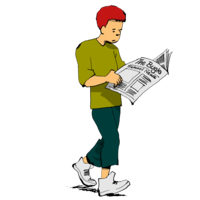
The study of adolescence is in an intersting state of flux.
The expectation that teenagers are rebellious by nature is probably not correct. After all, it is nly recently that adolescence, which more or less corresponds to the teen years, has been recognized at all. As recently as the early 1960, most young people went straight from school to employment, and wore the same clothes as everyone else at work. And of course that is still the pattern in many parts of the world, with the exception of school, which is sadly unavailable to so many. In most cultures teenage rebellion is not recognized at all.
Two years ago Professor Philip Graham, author of an excellent book published by Oxford University Press called ‘The End of Adolescence’ and a leading child and adolescent psychiatrist, challenged the myth that teenagers are trouble. He believes that the social attitudes towards the ‘adolescent stereotype’ that prevail in Western society have significant negative effects on the mental health of young people.
This stereotyping can cause some real problems:
- Low expectations of behaviour are often shared by teenagers themselves, leading to low self-esteem
- at least some of the frustration shown by young people in secondary schools can be attributed to the fact that they are ‘disempowered’ in relation to their intellectual and emotional competence
- The legal position of young people, for instance in relation to the age of criminal responsibility, voting age and the consumption of drugs and alcohol, is wildly inconsistent, and results both in injustice and in inadequate preparation for adult life
- The organisation of mental health services often fails to take into account the need to recognise the ‘young adult’ status of this age group.
The other side of this research is the risky behavior of many young people.
There is an excellent review in this month’s issue of Current Directions in Psychological Science by Laurence Steinberg, Distinguished University Professor and the Laura H. Carnell Professor of Psychology at Temple University in Philadelphia. He is also the Director of the John D. and Catherine T. MacArthur Foundation Research Network on Adolescent Development and Juvenile Justice.
The review points out that over the past 10 years there has been a great deal of new research on adolescent brain development that sheds light on why yonug peple engage in risky and dangerous behavior. And also answer the question about why the educational programs or interventions that have been developed have not been especially effective. According to Steinberg, heightened risk taking in adolescence is the result of competition between two very different brain systems, the “socioemotional” and cognitive-control networks. Both are undergoing maturation during adolescence, but along very different timetables. During the adolescence, the socioemotional system becomes more assertive during puberty, while the cognitive-control system gains strength only gradually and over a longer period of time.
The “socioemotional” system processes social and emotional information, and it becomes very active during puberty, allowing adolescents to become more easily aroused and experience more intense emotion. They also become more sensitive to social influence.
On the other side, the cognitive-control system is the part of the brain that regulates behavior and makes the ultimate decisions, but it is still maturing during adolescence and into a person’s mid-20s and perhaps beyond.
The socioemotional system is not always going full bore. When the system is not highly activated, for example, when individuals are not emotionally excited or they are alone, the cognitive-control network is strong enough to impose regulatory control over impulsive and risky behavior, even in early adolescence.
In the presence of peers, or in situations where emotions run high, the socioemotional network becomes sufficiently activated to diminish the regulatory effectiveness of the cognitive-control network.
Steinberg cites a study in which the presence of peers more than doubled the number of risks teenagers took in a video driving game.
As he says,
“In adolescence, not only is more merrier — it is also riskier.”
“There is a window of vulnerability in teens between puberty and mid-to-late adolescence in which kids have already started to experience the increased arousal of the socioemotional system, but they don’t yet have a fully mature cognitive control system,” he says. “Because their cognitive-control system is still not fully mature, it is more easily disrupted, especially when the socioemotional system is quite excited. And it gets excited by the presence of other people.”
“I don’t want people to think that education should not continue, I just think that it alone is not going to make much of a difference in deterring risky behavior. Some things just take time to develop, and, like it or not, mature judgment is probably one of them.”
Steinberg advocates stricter laws and policies that would limit opportunities for immature judgment that often have harmful consequences. For example, strategies such as raising the price of cigarettes, more vigilantly enforcing laws governing the sale of alcohol, expanding adolescents’ access to mental-health and contraceptive services, or raising the driving age would likely be more effective than education in limiting adolescent smoking, substance abuse, pregnancy, and automobile fatalities.
This is controversial stuff, but is also an illustration of a way in which science can help us make better decisions about how best to help young people to avoid auto-destruction.
Neurologically, teenagers are not just small adults, they are still large children. The problem is heightened because so many young people are constantly multi-tasking and children are being exposed to risky behaviors at ever younger ages, when their brains are least able to handle complex decisions about things that may have long-term consequences for them.






